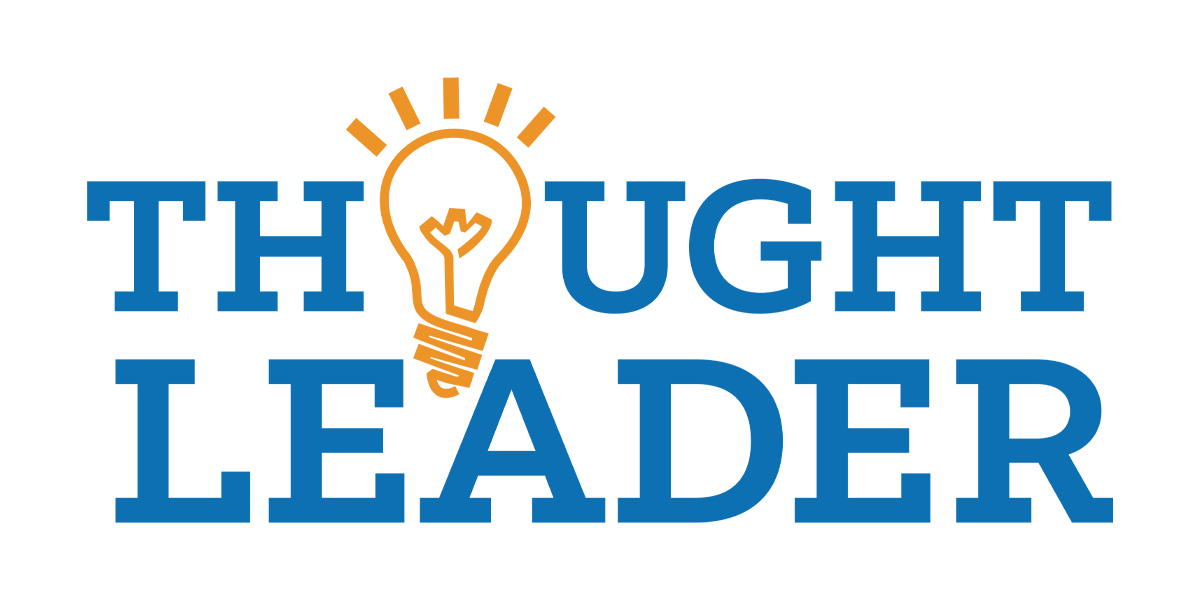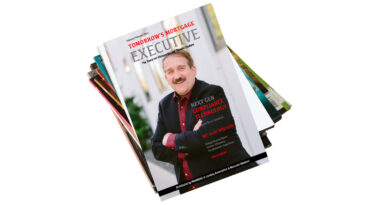The 2021 Thought Leader Award Winners Are …
We need industry thought leaders if mortgage lending is going to advance moving forward. For example, the impact of COVID-19 alone shows us that it’s time to think outside of the box so we can move ahead as a country and a world. Our existing awards all acknowledge the good work that executives are doing now, but we think it’s time to reward future work and initiatives. We need thought leaders that are not afraid to step forward and blaze a new trail. We need creativity. We need bold new ideas. As a result, for the second year in a row PROGRESS in Lending is honoring industry thought leaders.
In alphabetical order the 2021 Thought Leader Award Winners are:
PAUL ANSELMO
Chief Executive Officer
Evolve Mortgage Services

Paul Anselmo views mortgage innovation is at a crossroads today—the technology exists for lenders to create a completely digital eMortgage yet adoption hasn’t nearly caught up to its potential.
For example, eNotes registered on the MERS eRegistry grew by 261% during 2020 as lenders gravitated toward digital processes under social distancing requirements. However, the number of mortgages with eNotes represents only a fraction of overall originations. In addition, the closing technologies most lenders chose were really no more than bandages. While they did get the job done, they were not considered to be a true electronic closing or “eClosing.”
A digital mortgage pioneer like Paul believes what the industry should be striving for are eMortgages, which uses electronic processes and signatures in mortgage production and electronically signed closing documents using SMARTDocs® . These processes are then paired with an original electronic promissory note (eNote) signed on an eClosing platform and registered with the MERS eRegistry upon execution. In a true eClosing process, all documents are SMARDocs and the signing takes place online utilizing a remote online notary, or RON.
Paul thought that COVID, social distancing, and remote processes would have had a larger impact on eMortgage adoption than it did. While there has been an enormous adoption of online loan applications and system-to-system verifications of a borrower’s assets and income, Fannie Mae’s Day 1 initiative being a notable example. Still, most lenders adopting these processes are tied to manual processes, which was evident in the large numbers of underwriters hired over the past year.
These factors significantly increased industry adoption of digital processes as well as the legalization of RONs in most U.S. states. Yet they did not drive massive improvements in efficiency or result in the kind of streamlined mortgage experience most borrowers want and are now moving toward
Additional factors preventing a mass adoption include:
>>A significant disconnect and the confusion between digital mortgages and eMortgages. As he has pointed out, “digital mortgage” has become the industry’s favorite buzzword, but a “digital mortgage” can mean many different things. In most cases, a digital mortgage refers to lenders’ adoption of electronic processes, not a fully digital, SMARTDoc-enabled eMortgage process. The majority of borrowers today are signing disclosures and other documents electronically, however, since these documents are not SMARTDocs and that is what a true end-to-end eMortgage process requires.
>>Most lenders are still attached to using PDFs in place of paper documents. PDFs still require human staff or optical character recognition (OCR) tools to read and verify the data on them, and neither method is foolproof or as efficient as utilizing SMARTDocs. Furthermore, most eClosing vendors only provide the note as a SMARTDoc, not the entire loan file and some borrowers are still signing documents in paper format in front of a notary at closing vs. utilizing a RON.
While adoption of eMortgages has not been widespread, Paul believes the day is soon approaching when a truly completely digital eMortgage in which all documents are SMARTDocs and are eClosed and eNotarized remotely will become an industry standard. Already, a growing number of lenders are adopting and using this technology to enhance the efficiency and productivity of their staff. As CEO of Evolve Mortgage Services, Paul’s optimism continues to be the company’s impetus to help lead the industry’s digital revolution toward the “holy grail” of the true eMortgage.
ROB BAYER
President
Anomaly Squared

Historically the mortgage industry has not been on the leading edge of innovation. Rob Bayer believes that with Covid and the global pandemic, the industry was forced to embrace and look at innovative ways to keep the mortgage industry moving forward. That included having remote workforces, new appraisal models, electronic closings, and the understanding of building relationships and effective communication with borrowers. What he has seen is that the customer experience and the overall lender relationship with the borrower improves by leveraging innovative and strategies that improves communication, specifically outbound and inbound calling.
Customer acquisition and truly developing relationships with borrowers is what will determine the long-term sustainability for lenders while creating customers for life. This includes the speed at which a borrower in contacted, proper inbound and outbound call strategies that are tied to innovative lead generation platforms that will deliver a superior customer experience.
JOSH FRIEND
Founder & CEO
Insellerate

Traditionally innovation in the mortgage industry has lagged behind many other industries, says Josh. A number of lenders are still using outdated or antiquated technology that is holding them back from better engagement with prospective borrowers and from delivering a dynamic customer experience. One thing that the global pandemic has done is to accelerate the pace of innovation and highlight the need for advanced digital solutions in today’s mortgage market.
During these rapidly changing market conditions in the mortgage industry, communication, and customer engagement with your current borrowers and prospective borrowers are critical.
As a lender now is the time to stay in front of your customers and potential borrowers through timely and effective outreach using multiple communication channels such as texting, calling, emails, social retargeting, direct mail to develop customers for life
But to do so in these current condition’s lenders must embrace innovative technology solutions. Many lenders are handcuffed by limitations with their current lead management and CRM platform. They simply don’t have the ability use all of the communications channels mentioned above, let alone built in content and workflow to effectively reach borrowers when and where they need timely information and follow up.
Josh notes: The good news is that there are solutions that provide communication and engagement to address these conditions. So, what do these solutions need to provide? Today’s most advanced CRM & Engagement platforms need to deliver multi-channel engagement through text, social media, email, ringless voicemail, and direct mail all from within one unified platform. Also, the solution must easily integrate into a lender’s current technology stack and efficiently work with future technology. It is this powerful combination that will allow lenders to transform borrower engagement while effectively communicating with their audiences to create customers for life.
MICHAEL HAMMOND
Founder & President
NexLevel Advisors

The state of innovation in the current mortgage market is vibrant and dynamic, according to Michael. He notes that necessity often breeds innovation and ingenuity. We are still in the throes of a global pandemic. In addition, we are experiencing low-interest record rates with record-high demand and origination volumes, which has forced the industry to adapt and rethink how it does business. From learning to develop remote workforces, the technology needed to run a mortgage company remotely, alternative valuation models due to not being able to go into homes, adapting outreach programs to engage with the borrower in a safe environment, video conferencing becoming a business imperative, and norm, remote onboarding, and the list could go on and on.
This has challenged the mortgage industry to adapt on the fly or to fail miserably. The industry and its participants stepped up to the challenge and pressed onward. To do so required innovative thinking, stepping outside of the box in how we operate, rapidly implementing new innovative technologies and methodologies to not only survive but thrive. That is why Michael believes innovation in the current mortgage market is vibrant and dynamic.
Now that origination volumes and rates are leveling off, the key will be to not rest on our laurels and go back to business as usual in the mortgage market but instead to continue to lean in and constantly be in the mode of innovating.
First and foremost, we have to stop being so transaction-focused and start focusing on the relationship as an industry. The average borrower gets 7-11 loans over their lifetime, but currently, only 15% go back to their original lender for those additional loans. We need to deliver a much better borrower experience that focuses on the relationship and lifetime value instead of just the transaction in front of us. Technology and innovation can be great enablers to address this challenge.
Another area that needs innovation is finding ways to drive down the costs of originating loans while still delivering a superior experience that creates customers for life, says Michael. What technologies will help accomplish that in 2022? AI, RPA, Business Process Automation, new appraisal innovation, AI in underwriting, customer experience platforms, new lending automation, API’s that truly provide seamless tech stack connectivity?
Michael hopes that we continue to lean in and embrace the vibrant and dynamic innovative mindset that not only allowed us to respond to challenging market conditions but one that allowed us to thrive as an industry.
DOUG HORTON
CIO
Lenderworks

Perhaps out of necessity, innovation seems to be accelerating in the mortgage industry, says Doug. However, we still have a significant amount of progress to make. We’ve seen some major advances in our origination and online application technology, as well as progress on the closing as well. It’s also good to see a healthy amount of start-up ventures and private investment into companies designed specifically to build mortgage technology rather than innovation coming primarily from proprietary solutions being spun off of businesses with a focus on something other than technology.
Although we’ve seen a lot of specific, functional advances, too many technologies still build virtual silos into a process that requires extensive collaboration and communication among multiple independent participants. It’s Doug’s sincere hope that the rise of things like RPA and improved AI, in combination with a more global perspective of the workflow process at the strategic level, will encourage the building out of seamless tech stacks, rather than continuing the quest for an “end-to-end” solution—which so often results in a single function technology that only blocks out other solutions.
CECILIA JANSON
Chief Delivery Officer, Partner
BlackFin Group

Vendors within our industry do an amazing job of delivering great technology solutions, notes Cecilia. However, lenders often struggle with their responsibility to effectively manage, test, and implement these new technologies. As a result, 85% of these projects either fail or never achieve the anticipated ROI. We must innovate how all three of the major steps to implementation are addressed at the lender level, in partnership with the respective vendor service. There has been no innovation in relation to this approach. Some vendors do much better than others to guide the lender through implementation, but few have the time, resources, tools, strategies and methodologies to ensure lenders are successful.
Before lenders struggle with strategy, project management, testing, training, and change management – they need a defined framework to work from, Cecilia points out. “That is what we at BlackFin re delivering to the industry. Defined, off the shelf, frameworks and methodologies that efficiently guide lenders through each critical stage of technology implementation. We have several success stories that demonstrate how our innovative approach works. Because of our approach, we are able to get in and get out of a lender. We do not want to be the typical consulting firm who will create everything from scratch to help a lender for more billing time. We look to get in and get out,” she concludes.
ALLEN JINGST
Chief Revenue Officer (CRO)
LenderClose

Allen Jingst is the Chief Revenue Officer (CRO) of LenderClose, a portfolio real estate and home equity lending technology platform headquartered in Des Moines, Iowa. Jingst believes that community lenders face growing competition from larger institutions and fintechs that are entering the lending space. However, community lenders have the upper hand because established relationships with the people they serve. What they sometimes lack is the technological prowess to effectively service this market. This has spawned relationships with fintechs that offer solutions for the institution to optimize its offerings to be competitive. At a growing rate, community lenders are adopting technologies that diversify their lending portfolio, allowing them to prepare for the future and adjust their loan offerings.
Jingst understands that the borrower experience has been redefined. Now, borrowers expect a more sophisticated, digital experience. No longer is the borrower experience about face-to-face interactions in the lobby of community lenders’ branch; it is now about a seamless experience, both remote and in-person environments. Because community lenders cannot only rely on their physical branches; they must prioritize a strong digital presence that can rival that of competitors that lack a physical existence in the community. By implementing technologies that can improve their presence, while increasing offerings to serve more needs in the community, local lenders can be ready first to provide the services borrowers seek.
The industry knows that leveraging technology is essential in streamlining the lending processes. Using automated and intelligent workflows can reduce the time it takes community lenders to process real estate and home equity loans by 60%. More institutions should use these solutions to reduce manual data entry and errors. Technology can allow them to go above and beyond what borrowers expect by providing a personalized experience and speeding up the process. Fintechs offering consumer loans and other competitors are already doing this, so it’s time for community-based institutions to do the same and expand their lending options.
In the next year, Jingst expects to see an increased emphasis and traction in “consultative lending,” which can be defined as helping borrowers achieve a specific outcome by leveraging all available loan products, rather than focusing on one product or service. For instance, when taking a consultative approach to a borrowers’ query for a refinance of their mortgage, a community lender may be able to suggest another portfolio product such as a home equity loan, that may better help achieve the customer’s overall financial goals. To best prepare loan officers to offer these services, community lenders must provide them with the technology they need to close loans quickly and effectively.
“Community lenders rushed to implement new technology post-pandemic to bolster their lending portfolio, but many chose the wrong technology that does not help staff meet borrowers’ financial needs at a rate they expect. Evaluating their process and technology partners is the first step to rebuild and diversify their portfolios, allowing them to pinpoint and locate solutions that can help them weather whatever climate exists,” said Jingst.
JANE MASON
Founder & CEO
Clarifire
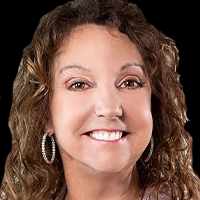
Jane believes innovation and new ways of doing business are thriving in both the servicing sector and the mortgage industry at large, thanks in part to a staggering level of uncertainty and chaos and the availability and increased awareness of new and proven technologies to help organizations overcome market disruption.
Mortgage servicers have rarely experienced a more volatile environment. Current challenges include a global pandemic that continues to cause financial strain for millions of Americans, devastating losses of life and property caused by natural disasters, and recent and future regulations with greater regulatory scrutiny. According to Jane, these challenges have fueled the adoption of workflow automation technology fueled by smart business rules, AI and advanced process automation, which are being used to add relief to bulk processing of like processes. This enables servicers to greatly reduce costs, and errors, while improving their ability to rapidly respond to borrowers who are desperately in need of assistance.
Jane also says that borrower self-service has emerged as a real competitive advantage for servicers that have dealt with enormous volumes of forbearance and loss mitigation requests and are anticipating and feeling the volumes of loan modifications and foreclosure potentials. Over the past year, many borrowers who have experienced job loss and needed to apply for forbearance as well as permanent solutions were able to do so directly from their servicers’ website, with a simple click of a button. By using technology like CLARIFIRE, a growing number of servicing organizations are also achieving straight-through, no-touch processing that enables them to approve deferred borrower payments in as little as 30 seconds and let borrowers modify their loans without ever speaking to anyone. This has also empowered servicers to focus their staffs on handling exceptions that require more analysis and customers who prefer human assistance.
According to Jane, there has also been a sharp increase in technology adoption that enable servicers to identify borrowers who need help yet could not be reached through automated communication, that capture an accurate record of all communications and activities pertaining to individual borrowers—which will prove particularly valuable under the CFPB’s new debt collection rules. These technologies display entire call histories, call statuses, workout status, and alerts that say “do not call” when necessary, and they can be easily synched into a servicer’s call center dialer system.
Jane says servicing operations today are being further enhanced through the seamless integration of third-party products and services into a servicer’s workflow application.
Using application programing interfaces (APIs) servicers can centralize workflows for all scenarios while extending the ability to automate processes outside of their organizations but never leave the workflow application. For example, Freddie Mac’s RESOLVE recently enabled users of the CLARIFIRE platform to determine the correct workout options for distressed borrowers under the GSE’s guidelines in just seconds eliminating the manual labor to update the Freddie systems. This gives servicers the ability to receive, rapid, optimal workout decisions for borrowers while they still have the borrower on the phone, which saves a phenomenal amount of time and effort compared to traditional processes.
While the current servicing technologies still fall short of these capabilities, Jane says new solutions are providing servicers with the power to adjust to evolving conditions by being flexible enough to adapt to any kind of workflow as circumstances change. She believes these solutions will eventually become standard, helping servicers gain greater visibility and controls across their organizations while being able to overcome future disruptions quickly and effectively.
SUNDEEP MATHUR
Vice President of Consumer Lending
Tavant

Technology is innovating at an explosive rate. Technologies like blockchain, Artificial intelligence, Machine Learning, and Data extracted from Documents are receiving tremendous investor funding and companies are making exponential progress. The challenge that industries face is the application and adoption of these technologies, notes Sundeep.
Similarly, within lending, we are faced with the challenge of “Applied Technology,” applying these tech innovations to the lending business problem, he says. The transformation of our businesses as we use/adapt these technology changes. Is it not about if or when we adopt these, but the crux of the issue is who takes the burden, takes up the cause, and drives this transformation within the organization?
In many organizations, CIOs are relegated to “keep the lights on,” and many organizations see IT as a necessary evil. CIOs understand the methods of delivery systems-based changes; they are in the best position to gauge the cost of change and the approach to deliver change. Seasoned CIOs who understand the business can see the other side of the equation and see the business impact, the business value of change.
According to Sundeep, this technology plus business expertise puts them in a unique position to help drive change and innovation in an organization. I believe innovation in lending today lacks these champions; lending lacks elevating these CIOs to the role of innovation leader and lending. There are many examples of organizations where we see this innovation and those led by Chief Executive Officers who see that rapid adoption of these maturing technologies is the only way to innovate and grow tomorrow.
As leaders, our primary role is a conduit between borrowers who need funds for their American Dream and investors; our role has always been to bring Main Street to Wall Street. The continued focus has been on improving processes, improving technology, improving relationships, and improving the flow of funds.
However, Sundeep believes that sometimes we don’t emphasize that borrowers are “buying their American dream.” The borrower does not want a loan; they want the home. The loan is in their way; it’s generally the single most significant financial decision most people have made to this point. It’s the loan process that is confusing, cumbersome, and daunting.
He says our ability to instill confidence in the borrower about this financial decision is the key. Before online trading, we had to use stockbrokers. In 1992 we empowered the consumer trader, gave them the knowledge, the tools, and access to information to become successful traders. And the stock market grew from 3,000 to 30,000… 10-fold.
Sundeep concludes that this empowerment of our consumers is the single greatest thought/concept/technology we can adopt to revolutionize our industry. To help the lending industry move from a 3T industry to a 30T industry.
MICHAEL MORFORD
Director of Product Development
DocMagic, Inc.
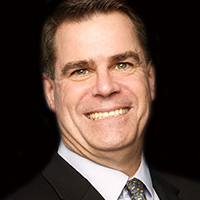
Now more than ever before, the mortgage industry is delivering significant value and a measurable ROI on technology investments, which all goes back to innovation. There’s no doubt that the entrance of fintechs with newly developed technologies has had an impact on the type and number of vendors which lenders can now leverage. It also brought a wave of new solutions and platforms that are entirely browser-based, according to Michael. This, coupled with the advancement of APIs has made it much easier for disparate systems to talk to one another and fluidly exchange data bi-directionally.
With the ability for vendors to more easily interface with one another also comes greater flexibility. Making it easier to work together to integrate, streamline workflows, and eliminate manual processes ultimately creates more opportunities to innovate. An example of this is how much headway digital mortgage technologies have made in the last few years. Michael notes, “We’re seeing tech providers move quicker with software development, workflow automation, smoother integrations, the removal of manual processes, and more. We’re going to see this get even better in 2022 and beyond.
“eClosings have seen much greater adoption among lenders as a result of the pandemic,” he reports. “Many lenders began offering them as an option to avoid in-person meetings at the closing table. However, there still remains significant opportunity to improve the collaboration between lenders and settlement agents in the orchestration and execution of eClosings. In addition, a number of states are still yet to fully implement RON technology acceptance. I believe that in order to best serve borrowers, as an industry we need to continue working at the state level until we gain 100 percent RON adoption. Not only will this give borrowers more options to close, it will also make a significant dent in cutting down on the amount of paper — from origination to close.”
TIM NGUYEN
CEO & Co-founder
BeSmartee

Mortgage tech is at a very high level right now, says Tim. We are seeing innovation occur in very targeted areas, such as underwriting, pricing and even secondary markets.
“With the mortgage industry being very wide, people are picking a very targeted pain point and solving for it,” he points out. “This is a very good; however, the challenge is weaving all these innovations together to accomplish something remarkable. Whether it’s what we’re doing — a 7-day close or an instant approval.”
Innovation is happening all throughout our industry, but the technologies are not all talking to each other… YET. For example, for verifications of assets, D1C came out and that was innovative, Tim believes. But it also meant that people had to take that and weave it into other technology, such as Mortgage POS solutions, the LO workflow, etc…
“In short, the state of innovation is very exciting right now — it’s high level and very targeted,” Tim says. “For BeSmartee, our vision is to improve lending through a 7-day close. The mortgage process is a lifecycle and it takes time. The idea is to weave complicated integrations together. Individually these integrations are already very complex, so we are working on weaving them together to make sure they all play nice and coordinate to the beat of the loan.”
JIM PAOLINO
CEO & Co-Founder
LodeStar Software Solutions

Mortgage lending has come a long way in the past few years, Jim points out. “I’m pleased to see that mortgage originators have started to move away from chasing the “shiny new toy” technology and started to think more holistically about how everything fits together. In looking at AI, machine learning, blockchain, robot L.O.s—you name it—the question starting to be asked is finally “how do they fit into, and improve, the process?” My hope is that with the introduction of better, more applicable technology, the industry’s focus on “back end” technology will soon catch up to the progress made on the application and sales front,” Jim notes.
We’ve spent a lot of time and effort innovating on “front-end” (point of sale and LOS) technology, according to Jim. But a lot of it is still so entirely sales-focused that the consumer experience still isn’t maximized. And it’s no secret that we’re simply not leveraging technology enough on the “back end” for the same efforts. “I’d like to see some of that focus evolve. For example, where are the online technologies and apps that allow an originator or loan officer to spend more time asking a potential borrower about themselves and their goals in lieu of order-taking and data-scraping? We’ve finally made it well into the 21st century with a lot of our LOS, POS technology. When will we evolve past the 1970’s with how we treat applicants and borrowers as they apply and go through the process?” Jim concludes.
WENDY PEEL
Managing Director, Partner – Reverse Mortgage
BlackFin Group
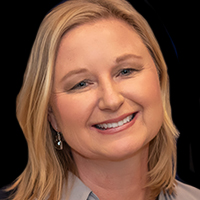
Wendy says there is little to no innovation from a mortgage product standpoint. Even as lenders the market shifts and volumes decline in 2022, lenders remain captive to the traditional lending programs of Fannie and Freddie. “Limiting lenders abilities to meet the growing demand for new lending products that will allow them to better service consumer needs, provide wall street products that net greater revenue and will help diversify their product offerings,” she points out.
“In order for lenders to meet the growing demand of our aging home loan population, lenders must find a way to help consumers leverage their residence to help meet the need for aging homeowners to stay in their home. At it’s current pace, the country will not be able to meet the growing demand for senior living,” continued Wendy. “As a result, reverse mortgage must move away from specialized lending to become a standardized product offering within their existing LOS and product menu, for those who qualify. I am providing consulting services that will help lenders easily adopt and normalize the reverse mortgage product within their operations – without having to specialize in relation to technology, process, etc.”
SCOTT ROBERTS
SVP of Sales
Insellerate

As an industry at large the mortgage industry is not known for being at the forefront of innovation. In some ways COVID has changed or at least accelerated the pace at which innovative solutions are now impacting the mortgage industry, according to Scott. From dealing with a global pandemic, to historically low rates and high volumes lenders were forced to embrace new and innovative technology solutions to meet the demand while addressing the current market conditions. Therefore, innovation is on the rise in the mortgage industry with forward thinking lenders who embrace these solutions can gain a competitive advantage in the marketplace, Scott believes.
It’s not easy to be a lender these days. Margins are down, rates are fluctuating, and new competition is right around the corner. Acquiring a customer is getting more costly, and keeping a customer engaged is key. As a lender, how you engage prospective borrowers can determine your success in today’s digital mortgage environment, Scott points out.
“A lender’s goal should be to deliver a better experience than competitors. To achieve this, lender’s need to implement innovative customer experience platforms that engage new prospects, boost customer loyalty, and avoid revenue loss,” Scott concludes. “Those customer experience platforms need to include Lead Management & CRM functionality built with intelligent, real-time capabilities allowing lenders to transform leads into transactions that build relationships and ultimately create customers for life.”
LEORA RUZIN, CMB, AMP
SVP of Lending
Coloramo Federal Credit Union
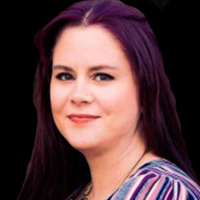
The emergence of COVID-19 has forced lenders, specifically community banks and credit unions, to truly evaluate the digital lending offerings available to their customers, according to Leora. Fintechs have brought forth credible solutions to the idea of the “digital loan”, while at the same time, becoming a true threat to financial institutions. With the amount of money being pumped into the industry through seed funding, SPAC acquisitions, and mergers, digital lending solutions continue to evolve. “It seems that every time we turn around, there is a new digital solution, but we are finding it more and more difficult to really see the differences in what is being made available and how these solutions will survive the immediate need brought on by the pandemic. At the heart of the issue is how the constant barrage of “new tech” drowns out the true innovators. Where is the technology that truly combines the need for a digital solution with the need for human interaction? And how can financial institutions bridge that connection and compete with the Fintechs?” she asks.
“Technology Human Balance”- This is a real issue being presented to lenders across the country, and is one that if often put on the back burner in favor of “being the first” to come up with a fancy new tech, Leora reports. “Yes, it is important to consistently keep our minds open to new ways of doing business that bring forth efficiencies in the loan process while helping companies reduce the costs to get that loan from A-Z (while remaining compliant, of course!). What should not be forgotten, however, is how these tech solutions affect the ability for the borrower to still feel connected to and valued by the lender,” Leora continues. “This is where smaller financial institutions can become the true leaders in this space, by taking advantage of their “local connection” with access to all of the newest tech out there. By combining video services with online loan applications, along with the flexibility of offering loan products that meet the needs of the unique borrowers, community banks and credit unions can really have the “best of both worlds”.
WILLIAM “BILL” SHUEY
Chief Credit Officer & Director of Securitization
Wipro Opus Risk Solutions

William “Bill” Shuey is the Chief Credit Officer and Director of Securitization at Wipro Opus Risk Solutions, a wholly owned subsidiary of Wipro Ltd. (NYSE: WIT) and risk management and quality control service provider. Shuey, who has 30 years of experience in the mortgage industry, has seen more people accept technology and the effect it can have on originations. When working from home, people have found they can work in an efficient and productive manner with technology. While he believes there is still some hesitation when it comes to fully embracing technology, there is more acceptance with e-documents which could lead to the industry embracing e-notes.
The current state of innovation in lending is all about speed of execution, which results in more products and services that can complete the verification required in the loan package electronically. Today, more rules-written engines can facilitate decisions on loan files with income verifications and credit reports provided electronically. To Shuey, these features illustrate the importance of increasing efficiencies to help reach conclusions faster.
Shuey notes, “Innovation in the lending industry is geared toward data exchange. For instance, in the due diligence industry, innovation is about taking data that’s readily available and comparing data points to make sure that there is integrity within the file. Because of electronic advancements, this can be done more effectively, allowing underwriters to better locate irregularities inside the file. Continued use of technology, especially electronic verifications, drives not only the review process forward but also the due diligence process.”
Shuey has been instrumental in working with the Structured Finance Association (SFA) to develop a new industry standard and operating initiatives surrounding QM 2.0. This continued development is a result of various industry leaders collaborating on issues from a review perspective to help facilitate the securitization process and preserve integrity. Focusing on consistency in these areas, the group’s goal is to ensure there is no competing interest generating exceptions and/or findings in the securitization process. Shuey and fellow industry executives work to establish initiatives that are consistent with what the industry believes is the standard and what is considered central data and exceptions that point to risk. By focusing on the areas of risk for the entire industry, the group can make advancements that improve the whole securitization process, allowing it to move smoothly and be executed more easily.
“It is crucial to join forces to establish a standard that pushes the industry forward, rather than one that is helpful to personal interests. I believe that competition comes down to technology, people, processes and training, and should not be based on how personal interest can be achieved. Through industry collaboration on what the norm should be without bias, it allows for competition to be put back into those factors that make a business distinctive. This approach adds a good deal of transparency and integrity into the industry as a whole,” said Shuey.
JEB S. SPENCER
Managing Partner & Co-Founder
TVC Capital

From the perspective of capital invested in innovative software companies in the industry, we are in a period of time similar to, or possibly greater than, investment during the dot-com era. There has been an extensive number of new entrants into the space in the last five to seven years. There is an equally large number of venture capital and growth equity firms investing in industry technology companies for the first time, according to Jeb.
The proliferation of the SaaS revenue model with three-year recurring revenue contracts vs. transaction-based and volume-dependent revenue models has made the industry much more attractive to capital providers. The cyclicality of the industry was a deterrent to many investors for over two decades, but now things have changed. As a result, innovation in the industry is occurring at an arguable unprecedented rate. New best-of-breed software companies are displacing long-time industry incumbents who just cannot keep up with the fast-moving new entrants. These incumbents are still, oftentimes, updating their software monthly, or even quarterly, while the most nimble firms with multi-tenant architectures are upgrading nightly. The old guard will find it increasingly difficult to compete.
“Increased interconnectivity of industry software applications would result in boosted proliferation of innovative solutions for the lender,” says Jeb. “The ideal scenario would be to connect all industry software applications via APIs in a single hub where the lender could pick and choose which connected product would work best for them. That selected product would automatically be connected with the lender’s other software products that were part of the hub. This would allow the lender to automate their operations in the way that worked best for them without having to invest a considerable amount of time on integrations.
“I was fortunate to sit on Ellie Mae’s Board and Chair the company’s M&A committee for nearly eight years. A key part of Ellie Mae’s growth was Sig Anderman and Jonathan Corr’s focus on building out the Ellie Mae network. The network connects hundreds of technology companies into the core product Encompass, providing benefits to both Ellie Mae and the connected company,” Jeb states. “The network was seen as so important to Ellie Mae that they also allowed “co-opetition,” permitting even competitive companies to link with the hub. This approach helped the company to build a dominant share of the market and ultimately touch 50% of loan applications in the industry. This culminated in the sale to Intercontinental Exchange for $11 billion.
“Also seeing the importance of interconnectivity is SimpleNexus, which was recently sold to nCino for $1.2 billion. Matt Hansen and Ben Miller worked tirelessly to integrate with the largest software companies in the industry. With over 30 integrated partners and a very innovative core product, SimpleNexus was able to rapidly grow its customer base, in part, through referrals from its integrated partners. This approach was critical to the company achieving over 100% year-over-year growth for multiple years and ultimately the sale of the business for an unexpectedly large price,” noted Jeb.
He believes that interconnectivity between disparate systems is absolutely crucial to facilitating innovation across the mortgage supply chain.
SCOTT STODDARD
SVP of Business Development, Default & Capital Markets
Flueid Software Corp.
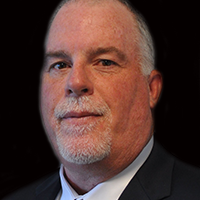
We have certainly been making some major strides with innovative technology solutions, in particular just in the last decade with the real estate market continually improving. And in the last couple of years, we have seen innovation on turbo with much of the advancements being made with proptechs and fintechs, according to Scott.
The way houses are purchased and financed is changing rapidly, with a list of newfound ways to conduct business more efficiently. Whether it’s automated underwriting, digital mortgages, iBuying, eClosings, onto the way loans are serviced, the last couple of years operating in a fast-moving, highly dynamic and red hot market has paved the way for so many game-changing new technologies and business models that one can’t help be intrigued with what 2022 will bring. With an open mind to doing things very differently and much better, vendors and lending organizations of all types are driving innovation at a frenetic pace that is yielding stellar results. Innovation in the mortgage vertical is at an all-time high right now, and it’s getting even better each year, Scott notes.
“Coming from the servicing and default management side of mortgage technology, I can tell you that there is still a lot of work to be done in order to integrate well with core servicing platforms. While APIs are much more robust than they were 10 years ago, those APIs are still challenged to integrate easily, swiftly, and cost effectively with older servicing systems. Further, the maintenance of those integrations can increase the total cost of annual system ownership. Conversely, much more headway has been made on the origination front from an interoperability perspective. We need to get better at system-to-system interoperability, and ultimately, how we service borrowers’ loans,” Scott points out.
“To have a good experience throughout the lifecycle of the loan, borrowers should be able to enjoy both a positive origination and closing experience as well as with how their loan is serviced thereafter. Whether it’s compliance adherence, how the borrower is communicated with, or being more engaging and transparent, we need super-star servicers, not sub-par servicers. That starts and ends with technology along with quick and efficient human involvement wherever and whenever needed. So, there’s definitely more work for the industry to accomplish with servicing technology innovation,” Scott concludes.
SAM VERMA
CEO
Peoples Processing, Inc.

Over the last year, international leaders from a variety of industry sectors have faced numerous obstacles. The mortgage business in the United States also faced unique issues. Fintech startups have been challenging the status quo and compelling banks and mortgage companies to alter their business models, according to Sam.
“Technology is critical in how lenders connect with borrowers and provide them with an enhanced user experience. Simultaneously, technology is being extensively used to speed up and increase the accuracy of processing while lowering costs and assuring compliance. Mortgage lenders developing these solutions must factor changing human behavior. Adopting these technologies will simplify the process, benefiting both borrowers and lenders,” Sam says.
In the wake of the pandemic, digital workforces were created, and safe transactional environments were established, as most firms decided to go digital. Demands from customers have changed through time, so mortgage service providers had to adapt their business models to keep up. There has been a continuous rise in the number of technology-based lenders since then, according to Sam.
Mortgage lenders who use AI/ML-based technology have experienced a growing market share. They are allowing borrowers to apply online or via their mobile devices. They also focus on using technology to process and close loans faster, thus helping retain the borrower.
“Repetitive and manual operations must be automated efficiently to ensure speedier processing,” Sam points out. “The focus should be on reducing human involvement and dependencies. Technology tools can be utilized for indexing, stacking, and preparing the file for underwriting. An automated QC-based approach can address a number of typical issues in the underwriting and closing process. This will ensure that the data is processed quickly.”
SUHA ZEHL
Chief Innovation Officer
BlackFin Group

In order for lenders to move forward and meet today’s growing consumer demand for the ultimate custom experience, and in order for lenders to remain competitive with the large national lenders – it will require a methodical approach toward innovation of their current lending process, according to Suha. “This poses a significant challenge to regional, state, and community – banks, credit unions, and independent mortgage bankers as they do not have the teams and capital required. Subsequently these mortgage lenders are challenged with being able to effectively innovate and adopt critical tools such as blockchain, more advanced AI, BI, or Virtual Reality,” she says.
“The mid-markets primarily, need a methodical strategy and roadmap to innovation adoption that is cost-effective, seamless, and efficient. That is my role at BlackFin,” Suha continues. “I have built and am now offering those services to help guide lenders to successful adoption of innovative technology tools and strategies.”

The Place for Lending Visionaries and Thought Leaders. We take you beyond the latest news and trends to help you grow your lending business.
